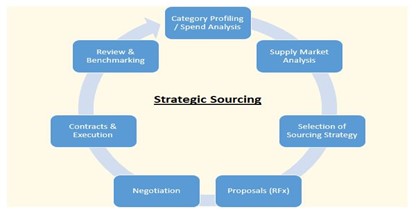| Date | Category |
|---|---|
| 20th September 2022 | Blog |
The potential for expensive mistakes when purchasing or upgrading technology and digital solutions is high. As one of the largest and most strategic spend areas, a foot wrong in the procurement process can do long-lasting financial and reputational damage. However, through careful focus at each of the key strategic procurement stages, universities can help navigate a high-risk process rife with pitfalls.
Here, SUMS Associate Steve Hope – a ‘poacher turned gamekeeper’, who can protect your interests in negotiations with technology suppliers – shares his insights. Steve outlines his views based on his 25+-year career designing and negotiating over 150 technology contracts with HEIs across the globe – including over 60% of UK HEIs – to help you deliver best value.
When procuring technology solutions, many universities use templated procurement procedures and purchases with standard contract templates. But technology solutions are a specialist purchase. They need specialist procurement processes and contract design to deliver substantial savings in time and money and of course de-risk implementation and support service.
It is widely recognised that there are seven stages to strategic procurement. Drawing upon my experience over the past 25 years, I have modified the content and summarised each stage, to be better aligned with Higher Education (HE) technology procurement.

1. Category Profiling/Spend Analysis
The correct needs analysis at this stage can help identify the “as is” and “to be” processes you hope to move to with the introduction of a new technology solution – within the budget spend identified. As a rule, it is best not to sketch out your “to be’s” on the basis of a particular product since almost all of the technology solutions will have workflow and document management and associated services to help design workflows to mimic your required “to be’s”.
2. Supply Market Analysis
The next stage involves assessing the market. The knowledge of trusted advisors within the sector can help you focus on which suppliers fit your needs-analysis before you make direct contact.
3. Selection of Sourcing Strategy
In the case of UK Universities, this will usually involve an expression of interest (EOIs) and a pre-qualification questionnaire (PQQ). Within the design of these documents, it’s important to gather enough information so that you can select at least three suppliers for the request for proposal (RFP)/invitation to tender (ITT)/ stage. I have seen too many EOIs and PQQs that only focus on the company’s finances and capabilities, rather than gaining important insight into the solution’s capabilities to enable a confident selection of suppliers for the next stage.
4. Proposals
This is the most important stage. It involves an RFP/ITT, followed by a demonstration and reference visits. It is important that supplier responses to each of your documents and the subsequent demonstrations align with your requirements.
Avoid suppliers’ standard responses to your documents and their own “standard” demos showing their own functionality – it is almost impossible to compare suppliers if you allow that to happen. I also recommend that you shortlist at least three suppliers for demos – this will of course cost time and money but will pay dividends in the final selections and negotiations.
5. Negotiation
Usually, in an HE context, you negotiate after demonstrations and responses to your RFP/ITT – but in these negotiations, the institution will have an advantage if you set out your legal terms in the RFP/ITT to which the supplier must adhere before responding. Of course, the future relationship will have a better chance of surviving if both sides are satisfied with the agreement – and to achieve this “win-win” it is much better to set out your terms before the supplier responses in stage four, above. This negotiation stage can then focus on the onboarding (implementation and support), performance (benchmarks and KPIs) and off-boarding (“if, then…”). This stage should be conducted with a minimum of two suppliers, in my view. I have seen many universities lose out on the contract benchmarks and KPIs, as well as price, as a result of negotiating with only one supplier. Procurement professionals should enter into discussions knowing what they are willing to accept – and what they ideally want – in terms of price, value, quality and performance.
6. Contracts and Execution
Once you have selected your preferred supplier(s), using your own university’s contract, rather than the supplier’s contract, is very important. You can save long-term heartache by having expert eyes look over your contract design to ensure it is fit for purpose for technology solutions, as well as for SaaS and cloud. Once you have selected your supplier, you need to ensure the supplier executes the contract in an expected manner. Orders should match each of the implementation points for functionality and be signed off and deployed. You should work towards live dates for “real-life” use rather than supplier deployment dates.
7. Review and Benchmarking
Ensure that the contracts agreed in the previous stage have KPIs and review points throughout the contract timelines to ensure the supplier performs as expected throughout the contract term. Agree on penalties up-front in the contract in cases where the supplier does not meet such performance benchmarks.
In a dwindling market for new technology acquisitions, you as the buyer have more bargaining power than the supplier may lead you to believe.
If you would like to discuss how we can help you, please contact sums@reading.ac.uk.
Steve Hope, SUMS Associate Consultant, is experienced in supplying technology solutions to Higher Education across the world and can help ensure your institution selects the best possible solution and get the best fit to your requirements with a lower risk of a failed implementation. Steve helps members and clients with the pre-purchase market analysis and selection process to ensure they get the best possible value for money from procurement and contract negotiation.
